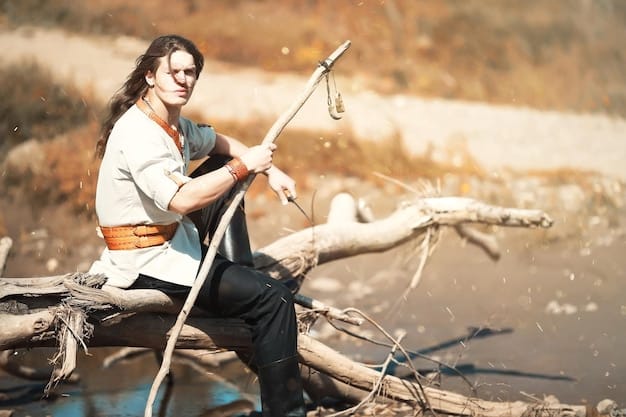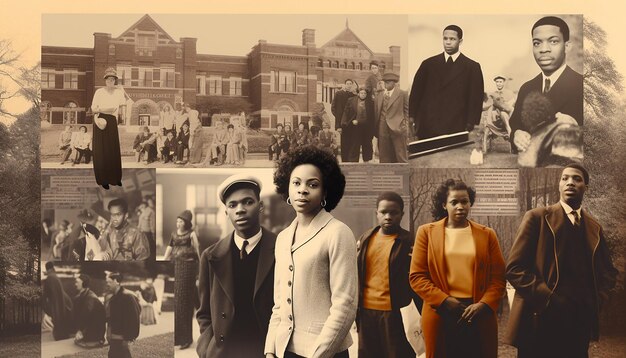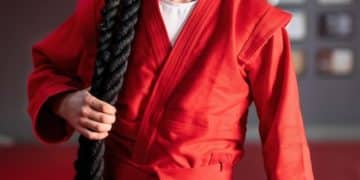Taekwondo History: From Ancient Korean Roots to US Training Centers

Exploring the History of Taekwondo: From Ancient Korea to US Training Centers reveals the evolution of this martial art, tracing its origins from ancient Korean military practices to its modern presence in U.S. training facilities.
Delve into the fascinating world of Taekwondo, a martial art renowned for its dynamic kicking techniques and disciplined approach. This exploration, titled Exploring the History of Taekwondo: From Ancient Korea to US Training Centers, will guide you through its historical development, cultural significance, and its journey from its Korean origins to the prominent training centers in the United States.
Unveiling the Ancient Roots of Taekwondo
Taekwondo’s history is deeply intertwined with Korean military practices and martial arts traditions. Understanding its initial development provides crucial context for appreciating its evolution.
The origins of Taekwondo can be traced back to ancient Korea, where various martial arts styles were practiced. These early forms were essential for military training and self-defense.
Early Korean Martial Arts
Several ancient Korean martial arts contributed to the foundation of what would eventually become Taekwondo.
- Subak/Taekkyon: These were indigenous Korean martial arts emphasizing kicking and striking techniques. Taekkyon, in particular, focused on fluid, dance-like movements.
- Hwarangdo: Practiced by elite youth warriors of the Silla Kingdom, Hwarangdo included martial arts training alongside academic and philosophical education.
- Military Influence: The need for effective combat skills led to the development of specialized techniques used by Korean soldiers throughout history.
These early martial arts were not only methods of combat but also integral parts of Korean culture and identity. They embodied principles of discipline, respect, and self-improvement.

The synthesis of these martial traditions laid the groundwork for the standardization and codification of Taekwondo in the 20th century. This unification was a significant step in establishing Taekwondo as a distinct and recognized martial art.
The Japanese Occupation and Martial Arts Suppression
During the Japanese occupation of Korea (1910-1945), Korean culture, including martial arts, faced significant suppression. This period profoundly impacted the development and preservation of Taekwondo.
The Japanese colonial government actively discouraged and outlawed traditional Korean martial arts, promoting Japanese martial arts like Karate and Judo instead.
Underground Resistance and Adaptation
Despite the suppression, Korean martial arts practitioners secretly continued to train and develop their skills.
Many practitioners went underground, preserving their knowledge and techniques in clandestine training sessions. Others integrated elements of Japanese martial arts into their practice, adapting to survive and evolve. This period of adaptation contributed to the unique characteristics of modern Taekwondo.
The end of World War II and the liberation of Korea marked a turning point. It allowed for the revival and formalization of Korean martial arts, setting the stage for the creation of Taekwondo.
The resilience and determination of Korean martial artists during the occupation were crucial in ensuring the survival and eventual resurgence of their art.
The Birth of Modern Taekwondo
After the Korean War, there was a concerted effort to unify the various martial arts styles that had survived. This effort led to the creation of what is now known as modern Taekwondo.
Several prominent martial arts schools, known as “kwans,” emerged, each with its own unique style and techniques.
- Chung Do Kwan: Known for its strong emphasis on basic techniques and foundational movements.
- Moo Duk Kwan: Emphasized both hard and soft techniques, with a focus on practical self-defense.
- Song Moo Kwan: Integrated various martial arts influences, promoting a well-rounded approach to training.
- Chang Moo Kwan: Focused on health and fitness, incorporating elements of gymnastics and acrobatic movements.

These kwans played a pivotal role in shaping contemporary Taekwondo. Their leaders collaborated to standardize techniques, terminology, and the overall structure of the martial art.
The formalization of Taekwondo was not without its challenges. Different kwans held distinct philosophies and techniques, leading to debates and negotiations over standardization.
Despite these challenges, the leaders of the kwans eventually reached a consensus, leading to the establishment of a unified martial art that could represent Korea on the international stage.
Taekwondo’s Journey to the United States
The introduction of Taekwondo to the United States was a gradual process, beginning in the mid-20th century. Various instructors and practitioners played key roles in popularizing the martial art.
Korean instructors began to arrive in the U.S., often as part of military exchanges or to teach at universities. These early instructors introduced Taekwondo to American audiences.
Key Figures in Early U.S. Taekwondo
Several individuals were instrumental in establishing Taekwondo in the United States.
- Jhoon Rhee: Often called the “Father of American Taekwondo,” Rhee opened the first Taekwondo school in the U.S. and significantly promoted the martial art.
- Henry Cho: Established a widespread network of schools and contributed to the standardization of Taekwondo training methods in the U.S.
- Allen Steen: A pioneer in Texas, Steen introduced Taekwondo to a region that would become a stronghold for the martial art.
These pioneers not only taught Taekwondo but also adapted their teaching methods to suit the American context. This involved adjusting training techniques, terminology, and the overall presentation of the martial art.
The growth of Taekwondo in the U.S. was also fueled by its integration into military training programs. Many American soldiers stationed in Korea were exposed to Taekwondo and brought their knowledge back to the U.S.
As Taekwondo gained popularity, it expanded beyond military bases and universities, attracting a diverse range of practitioners from all walks of life.
The Development of US-Based Taekwondo Training Centers
As Taekwondo’s popularity grew in the U.S., numerous training centers emerged, each offering its unique approach to teaching and training.
These training centers vary in size, style, and philosophy. Some focus on traditional techniques and forms, while others emphasize sparring and competition. Others concentrate on fitness and self-defense applications.
Styles and Specializations
Taekwondo training centers in the U.S. offer a wide array of styles and specializations.
Many centers follow the traditional curriculum established by the World Taekwondo Federation (WTF) or the International Taekwondo Federation (ITF). Others incorporate elements from different martial arts or develop their own unique styles. Some centers specialize in sparring and competition, training athletes for national and international events. Others focus on self-defense, teaching practical techniques for real-world situations.
Beyond technical skills, US-based Taekwondo training centers often emphasize character development, instilling values such as respect, discipline, and perseverance in their students.
The influence of Korean culture remains strong in many of these training centers. Instructors often incorporate elements of Korean language, history, and traditions into their lessons.
These centers have played a vital role in promoting Taekwondo’s growth and recognition in the U.S. They provide accessible training opportunities for individuals of all ages and abilities.
Taekwondo in American Popular Culture and Competition
Taekwondo has made significant inroads into American popular culture, appearing in movies, television shows, and video games. This exposure has further boosted its popularity and recognition.
Martial arts films featuring Taekwondo techniques have captivated audiences and inspired many to take up the martial art. Famous films featuring Taekwondo include Best of the Best and various martial-arts movies.
Taekwondo in the Olympic Games
Taekwondo’s inclusion in the Olympic Games has been a major milestone in its global recognition.
Taekwondo was first featured as a demonstration sport at the 1988 Seoul Olympics. It became a medal sport at the 2000 Sydney Olympics. This recognition significantly raised Taekwondo’s profile and prestige, attracting more participants and funding. American athletes have achieved considerable success in Olympic Taekwondo, winning numerous medals and inspiring a new generation of practitioners.
The presence of Taekwondo in popular culture and the Olympic Games has solidified its place as a well-respected and widely practiced martial art in the United States.
| Key Point | Brief Description |
|---|---|
| 🥋 Ancient Origins | Taekwondo evolved from ancient Korean military arts. |
| 🇯🇵 Japanese Influence | Suppression during the occupation led to adaptation. |
| 🇺🇸 US Popularity | Key figures popularized Taekwondo in the USA. |
| 🏅 Olympic Sport | Taekwondo became an official Olympic sport in 2000. |
Frequently Asked Questions about Taekwondo
▼
Taekwondo originated in Korea, evolving from ancient martial arts practices and military training techniques. It was later standardized in the mid-20th century.
▼
Key figures include Jhoon Rhee, often called the “Father of American Taekwondo,” Henry Cho, and Allen Steen, who established early Taekwondo schools and training methods in the U.S.
▼
During the Japanese occupation of Korea, traditional Korean martial arts were suppressed. However, practitioners secretly continued to train, which helped preserve and evolve Taekwondo.
▼
Taekwondo was first featured as a demonstration sport at the 1988 Seoul Olympics and officially became a medal sport at the 2000 Sydney Olympics, significantly boosting its global recognition.
▼
US Taekwondo training centers often emphasize character development, instilling values such as respect, discipline, perseverance, and self-control, along with the technical skills of the martial art.
Conclusion
From its ancient roots in Korea to its modern presence in the United States, Taekwondo has undergone a remarkable transformation. Its journey reflects resilience, cultural adaptation, and the dedication of martial artists worldwide, solidifying its place as a respected and popular martial art.





